Studio Profile: Black River Entertainment

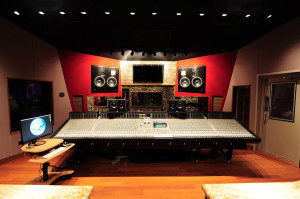 Sound Stage Studios and Ronnie’s Place on Music Row in Nashville, Tennessee are two of the city’s few historic studios to successfully survive the recording industry tumult of the 2000s, and the neighboring facilities are now thriving under management from Black River Entertainment. Together, the forty-plus year-old studios claim over five hundred number-one singles and hundreds of millions of albums sold by practically every big name in country and crossover music, including Johnny Cash, Jerry Lee Lewis, and, more recently, Miranda Lambert and Carrie Underwood. After a series of renovations that aligned the complex’ three main tracking rooms (Front Stage, Back Stage, and Ronnie’s Place) with a modern and forward-thinking workflow, Sound Stage and Ronnie’s Place are known around town as the place to go for SSL J-Series analog consoles, ATC mains and nearfields, and a work ethic that reliably transmutes creativity into chart-topping hits.
Sound Stage Studios and Ronnie’s Place on Music Row in Nashville, Tennessee are two of the city’s few historic studios to successfully survive the recording industry tumult of the 2000s, and the neighboring facilities are now thriving under management from Black River Entertainment. Together, the forty-plus year-old studios claim over five hundred number-one singles and hundreds of millions of albums sold by practically every big name in country and crossover music, including Johnny Cash, Jerry Lee Lewis, and, more recently, Miranda Lambert and Carrie Underwood. After a series of renovations that aligned the complex’ three main tracking rooms (Front Stage, Back Stage, and Ronnie’s Place) with a modern and forward-thinking workflow, Sound Stage and Ronnie’s Place are known around town as the place to go for SSL J-Series analog consoles, ATC mains and nearfields, and a work ethic that reliably transmutes creativity into chart-topping hits.
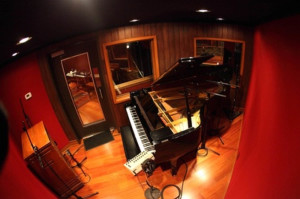
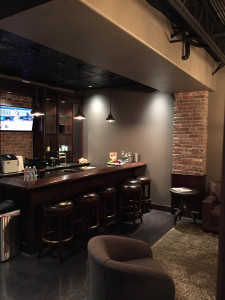 “People have always come to Sound Stage and Ronnie’s Place to get solid work done,” said legendary Grammy Award-winning engineer and producer Chuck Ainlay. “The people are great, and there’s nothing hyped about the facilities or the attitude of the place.” Ainlay’s relationship with Sound Stage is a deep one. He made some of his first professional recordings there and later took a more full-time role at Sound Stage in collaboration with famed country producer Jimmy Bowen. He eventually became co-owner of the facility and set up his pioneering surround sound and early digital systems in Back Stage. Even after selling his share to Black River Entertainment, Ainlay remains the principal resident of his longtime home, Back Stage.
“People have always come to Sound Stage and Ronnie’s Place to get solid work done,” said legendary Grammy Award-winning engineer and producer Chuck Ainlay. “The people are great, and there’s nothing hyped about the facilities or the attitude of the place.” Ainlay’s relationship with Sound Stage is a deep one. He made some of his first professional recordings there and later took a more full-time role at Sound Stage in collaboration with famed country producer Jimmy Bowen. He eventually became co-owner of the facility and set up his pioneering surround sound and early digital systems in Back Stage. Even after selling his share to Black River Entertainment, Ainlay remains the principal resident of his longtime home, Back Stage.
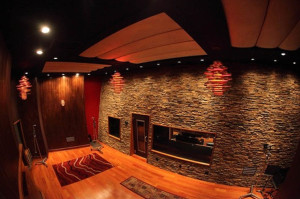
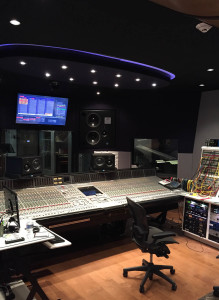 When Ainlay first took over Back Stage, he knew he wanted mastering-quality mains installed so that his work would go out the door as true and correct as possible. He looked and listened to a huge number of systems, but it was a visit to David Gilmour’s houseboat on the Thames with his longtime client Mark Knopfler that revealed to him the monitoring path that he would take, and on which he remains to this day. “David had ATC SCM300ASL loudspeakers on his houseboat,” Ainlay said. “They sounded absolutely stunning, and I thought, ‘if they sound this good on a houseboat, imagine how they’ll sound in a proper control room!’ So we ordered them from Drawmer UK and paid the import duties, but it was worth it as we had the first ATCs in Nashville.”
When Ainlay first took over Back Stage, he knew he wanted mastering-quality mains installed so that his work would go out the door as true and correct as possible. He looked and listened to a huge number of systems, but it was a visit to David Gilmour’s houseboat on the Thames with his longtime client Mark Knopfler that revealed to him the monitoring path that he would take, and on which he remains to this day. “David had ATC SCM300ASL loudspeakers on his houseboat,” Ainlay said. “They sounded absolutely stunning, and I thought, ‘if they sound this good on a houseboat, imagine how they’ll sound in a proper control room!’ So we ordered them from Drawmer UK and paid the import duties, but it was worth it as we had the first ATCs in Nashville.”
Times got tough in the 2000s, and Sound Stage started to go down the vicious cycle of low funds leading to low investment, leading to even lower funds, leading to even lower investment, and so on. “Black River Entertainment really stepped in at the right time,” said Nick Autry the studio’s current general manager. In addition to handling the booking and financials, Autry spends many of his days engineering and producing at Sound Stage. He continued, “When they purchased it, the three big tracking rooms needed work. They were tired looking and increasingly out of date. They told us, ‘If you can dream it, we can make it happen.’ They really made this place great again.”

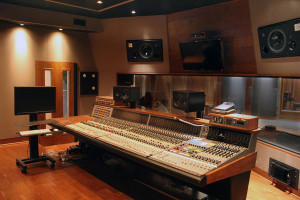 Warren Rhoades, Mike LeBlanc, and Ainlay collaborated to update all three spaces. They started in Front Stage, where the renovations included new slate wall, better sight lines, and a bank of amp lockers. Remarkably, they knocked out the back wall of the control room and extended it. Consistent with the brand, they kept its SSL console but replaced the existing mains with ATC SCM300ASLs. “Front Stage is now an ideal version of the modern Nashville tracking studio, with plenty of acoustic isolation but minimal visual isolation,” remarked Ainlay. Although bowing to a modern workflow, Ronnie’s Place remains the quintessential classic Nashville studio. Nevertheless, improvements were needed, and the team took out the compression ceiling and knocked out the back wall to make the control room larger. They replaced a Neve console with an SSL 9000J and replaced the existing mains with ATC SCM150ASLs. Like the other two, Back Stage’s control room grew with an extension of its back wall into the parking lot. Its other major improvements included better modular isolation options in the live room.
Warren Rhoades, Mike LeBlanc, and Ainlay collaborated to update all three spaces. They started in Front Stage, where the renovations included new slate wall, better sight lines, and a bank of amp lockers. Remarkably, they knocked out the back wall of the control room and extended it. Consistent with the brand, they kept its SSL console but replaced the existing mains with ATC SCM300ASLs. “Front Stage is now an ideal version of the modern Nashville tracking studio, with plenty of acoustic isolation but minimal visual isolation,” remarked Ainlay. Although bowing to a modern workflow, Ronnie’s Place remains the quintessential classic Nashville studio. Nevertheless, improvements were needed, and the team took out the compression ceiling and knocked out the back wall to make the control room larger. They replaced a Neve console with an SSL 9000J and replaced the existing mains with ATC SCM150ASLs. Like the other two, Back Stage’s control room grew with an extension of its back wall into the parking lot. Its other major improvements included better modular isolation options in the live room.
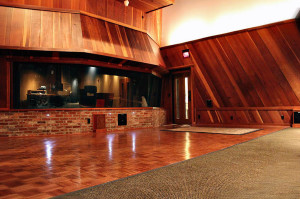 Country legend Miranda Lambert was the first client to use Front Stage after the renovations, and, true to its “let’s get the work done” attitude, Sound Stage gave her every accommodation. “Miranda wanted to live in her tour bus while she was recording, and Sound Stage arranged it so she could park just a few steps from the studio door,” Ainlay said. “Because her bus says ‘Miranda Lambert,’ it attracted fans, and the studio gave her the necessary security. They were cool and the fans were cool, and the whole thing ended up having a nice feel to it. In addition, we allowed her to keep her kangaroo [editors note: for real] in the studio. It became a running joke, ‘Hey look out! There’s a kangaroo under the console!’”
Country legend Miranda Lambert was the first client to use Front Stage after the renovations, and, true to its “let’s get the work done” attitude, Sound Stage gave her every accommodation. “Miranda wanted to live in her tour bus while she was recording, and Sound Stage arranged it so she could park just a few steps from the studio door,” Ainlay said. “Because her bus says ‘Miranda Lambert,’ it attracted fans, and the studio gave her the necessary security. They were cool and the fans were cool, and the whole thing ended up having a nice feel to it. In addition, we allowed her to keep her kangaroo [editors note: for real] in the studio. It became a running joke, ‘Hey look out! There’s a kangaroo under the console!’”
Autry was clear about their move to ATC mains for all three rooms: “Chuck’s been using ATCs for so long. In fact, he got a pair of ATC SCM25A nearfields a few years ago and we all loved them so much that now the studio owns a pair as well. We have other nearfields available, of course, but clients tend to stick with the ATCs once they hear them. It was a no-brainer for us to upgrade the other rooms to ATC mains. People know what they’re getting and they’re excited about it. As an engineer myself, I love ATC’s clarity throughout the frequency response (most especially in the low end) and I love that my mixes always translate beautifully. Because that’s what it’s all about in the end – creating tracks that sound fantastic on anything.”
In addition to all the usual accommodations, like having appropriate plug-ins and music creation software, Sound Stage has taken a bold step forward in terms of visual content creation. Part of Back Stage’s renovation included the installation of eight 1080p, 360 full-view remote control cameras and a new video-editing suite to go with it. “It’s a big deal because people want content,” said Autry. “They can rent a camera guy, which is great, but if they don’t want the distraction, all the cameras can be remote controlled from the video editing suite. We can zoom in and get all kinds of otherwise-impossible shots. The artists can still be creative without even thinking about it, and now they’ve got content to add to social media or as package extras. Younger artists are especially excited because they know they need the extra content.”